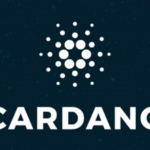Leading Web3 in 2025: Polkadot Crypto or Ethereum?

The concept of Web3, which aims to create a decentralized and user-centric internet, is gaining traction as blockchain technology continues to advance. This new digital landscape plans to offer increased security and openness through decentralized apps (dApps), decentralized finance (DeFi), and non-fungible tokens (NFTs). At the forefront of this movement, we find two major players: Ethereum and Polkadot. Ethereum, which debuted in 2015 as the pioneer of smart contracts, and Polkadot, introduced by Ethereum co-founder Gavin Wood in 2020, as a “blockchain of blockchains.”
As we step into 2025, the competition between Polkadot Crypto and Ethereum is heating up as both platforms push the boundaries of technology and strive for wider adoption, each vying to become the primary choice for the next era of decentralized applications.
Looking at network design, Polkadot stands out as a true “blockchain of blockchains.” Its architecture includes a central Relay Chain that offers shared security and coordination, along with multiple parachains running in parallel to enable seamless communication and efficient scalability. In contrast, Ethereum remains a single base layer blockchain and is addressing scalability through Layer-2 solutions and shard chains. However, Ethereum faces challenges in terms of native interoperability between different blockchains, a gap that Polkadot seems to bridge effectively with true interoperability, shared security, and on-chain governance.
In terms of throughput, Polkadot’s architecture excels, as evidenced by stress tests on its Kusama network, where it successfully handled approximately 143,000 transactions per second (TPS) at just 23% load, indicating a potential maximum capacity of over 600,000 TPS. On the other hand, Ethereum’s current throughput is lower, but the network aims to scale up to around 100,000 TPS through upcoming upgrades such as sharding and rollups. This showcases Polkadot’s existing high capacity and Ethereum’s ongoing efforts toward scalable solutions.
Despite Polkadot’s impressive performance, Ethereum maintains a lead in developer activity globally, boasting a significantly higher number of monthly active developers compared to Polkadot. While Polkadot’s developer community is growing rapidly, Ethereum remains the preferred platform for developers due to its strong network and extensive ecosystem.
When it comes to the ecosystem and decentralized finance (DeFi), Ethereum reigns supreme with its vast support for DeFi and NFTs, hosting thousands of live dApps across various sectors. In comparison, Polkadot’s ecosystem is smaller but expanding steadily, with innovations like trustless bridges and the introduction of groundbreaking updates like the JAM protocol attracting more developers to the platform.
A standout feature of Polkadot is its on-chain governance and treasury system, allowing DOT holders to participate actively in voting on network upgrades and allocating funds to community initiatives. In contrast, Ethereum leans more towards off-chain governance through the Ethereum Foundation and core developer discussions. Despite differences in governance approaches, both platforms evolve through community involvement, with Polkadot offering a more structured and transparent on-chain governance model.
In assessing the strengths and challenges of Polkadot and Ethereum through key metrics such as technology, scalability, adoption, transaction fees, ecosystem, and market capitalization, both platforms demonstrate distinct advantages and potential growth opportunities in the Web3 landscape.
The question of which platform will lead Web3 in 2025 remains unanswered, as both Polkadot and Ethereum continue to bolster their offerings and attract support from their respective communities. Industry experts closely monitor these developments, eager to witness the success of both platforms as they navigate the evolving digital frontier of Web3.




